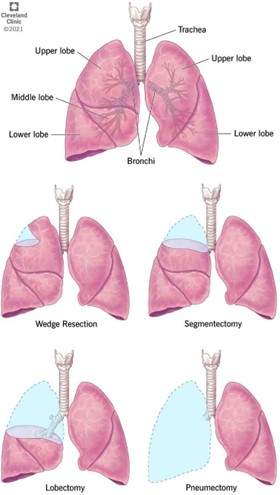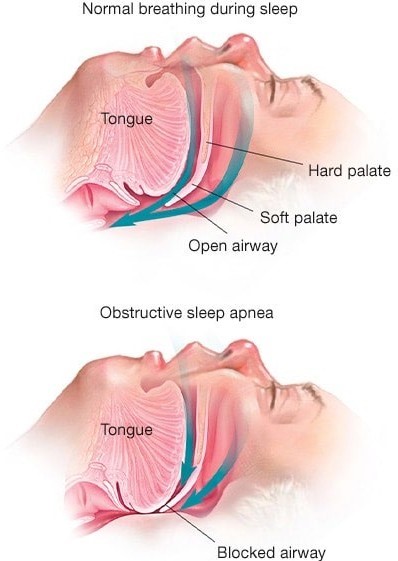A nurse is assessing a client who is to undergo a left lobectomy to treat lung cancer. The client tells the nurse that she is scared and wishes she had never smoked. Which of the following responses should the nurse make?
"Your doctor is a great surgeon. You will be fine."
"You may feel scared. Let's talk about what you are afraid of."
"I understand your fears. I was a smoker also."
"Don't worry. The important thing is you have now quit smoking."
The Correct Answer is B
This response is empathetic and therapeutic, as it acknowledges the client's feelings and invites her to express her concerns. It also shows respect and interest in the client's perspective.
a) This response is false reassurance and nontherapeutic, as it dismisses the client's feelings and implies
that the surgery will solve everything.
b) This response is self-disclosure and nontherapeutic, as it shifts the focus from the client to the nurse and
does not address the client's fears.
d) This response is minimizing and nontherapeutic, as it tells the client how to feel and does not acknowledge the client's regret or anxiety.

Nursing Test Bank
Naxlex Comprehensive Predictor Exams
Related Questions
Correct Answer is B
Explanation
Answer: B
Rationale:
A) "Expect your sputum cultures to be negative after 6 months of therapy":
While sputum cultures may become negative after a period of effective therapy, it is not always guaranteed to happen within exactly 6 months. Tuberculosis (TB) treatment usually involves several months of medication, and sputum cultures are monitored periodically to assess treatment efficacy, not solely at the 6-month mark.
B) "Drink at least 8 ounces of water when you take the pyrazinamide tablet":
Drinking plenty of water with pyrazinamide is important to prevent dehydration and to help minimize potential side effects, such as hyperuricemia or gout. Adequate hydration can also aid in the effective elimination of the medication from the body, thus reducing the risk of adverse effects.
C) "Provide a sputum specimen every 2 weeks to the clinic for testing":
Sputum specimens are typically provided less frequently than every 2 weeks, usually monthly, to monitor the progress of TB treatment. Testing frequency may vary depending on the client's condition and the healthcare provider's recommendations.
D) "Take isoniazid with an antacid":
Isoniazid should not be taken with antacids, as antacids can interfere with the absorption of isoniazid. It is usually advised to take isoniazid on an empty stomach, and clients should be instructed to wait at least 1 hour after taking isoniazid before consuming antacids.
Correct Answer is A
Explanation
This statement indicates an understanding of the teaching, as weight loss is one of the most effective ways to decrease the number of nightly apneic episodes in clients who are obese and have obstructive sleep apnea. Obstructive sleep apnea is a condition in which the upper airway collapses or becomes blocked during sleep, causing pauses in breathing and hypoxia. Obesity is a major risk factor for obstructive sleep apnea, as excess fat tissue around the neck and throat can narrow the airway and increase its collapsibility. Losing weight can reduce the pressure on the airway and improve its patency.
b) "I sleep better if I take a sleeping pill at night." This statement indicates a lack of understanding of the teaching, as sleeping pills are not recommended for clients who have obstructive sleep apnea. Sleeping pills can worsen the condition by relaxing the muscles of the throat and tongue, which can further obstruct the airway and decrease the arousal response to hypoxia. The nurse should advise the client to avoid sleeping pills and other sedatives or alcohol before bedtime.
c) "It might help if I tried sleeping only on my back." This statement indicates a lack of understanding of the teaching, as sleeping on the back is not helpful for clients who have obstructive sleep apnea. Sleeping on the back can increase the risk of airway obstruction by allowing gravity to pull the tongue and soft palate backward, which can block the airway and cause snoring and apnea. The nurse should suggest that the client try sleeping on the side or elevate the head of the bed to prevent this.
d) "I should get a humidifier to run at my bedside at night." This statement indicates a lack of understanding of the teaching, as a humidifier is not likely to decrease the number of nightly apneic episodes in clients who have obstructive sleep apnea. A humidifier can moisten the air and ease breathing for clients who have dry or irritated nasal passages, but it does not address the underlying cause of airway obstruction or hypoxia. The nurse should inform the client that a humidifier may not be effective for obstructive sleep apnea and may increase the risk of infection or mold growth if not cleaned properly.

Whether you are a student looking to ace your exams or a practicing nurse seeking to enhance your expertise , our nursing education contents will empower you with the confidence and competence to make a difference in the lives of patients and become a respected leader in the healthcare field.
Visit Naxlex, invest in your future and unlock endless possibilities with our unparalleled nursing education contents today
Report Wrong Answer on the Current Question
Do you disagree with the answer? If yes, what is your expected answer? Explain.
Kindly be descriptive with the issue you are facing.
